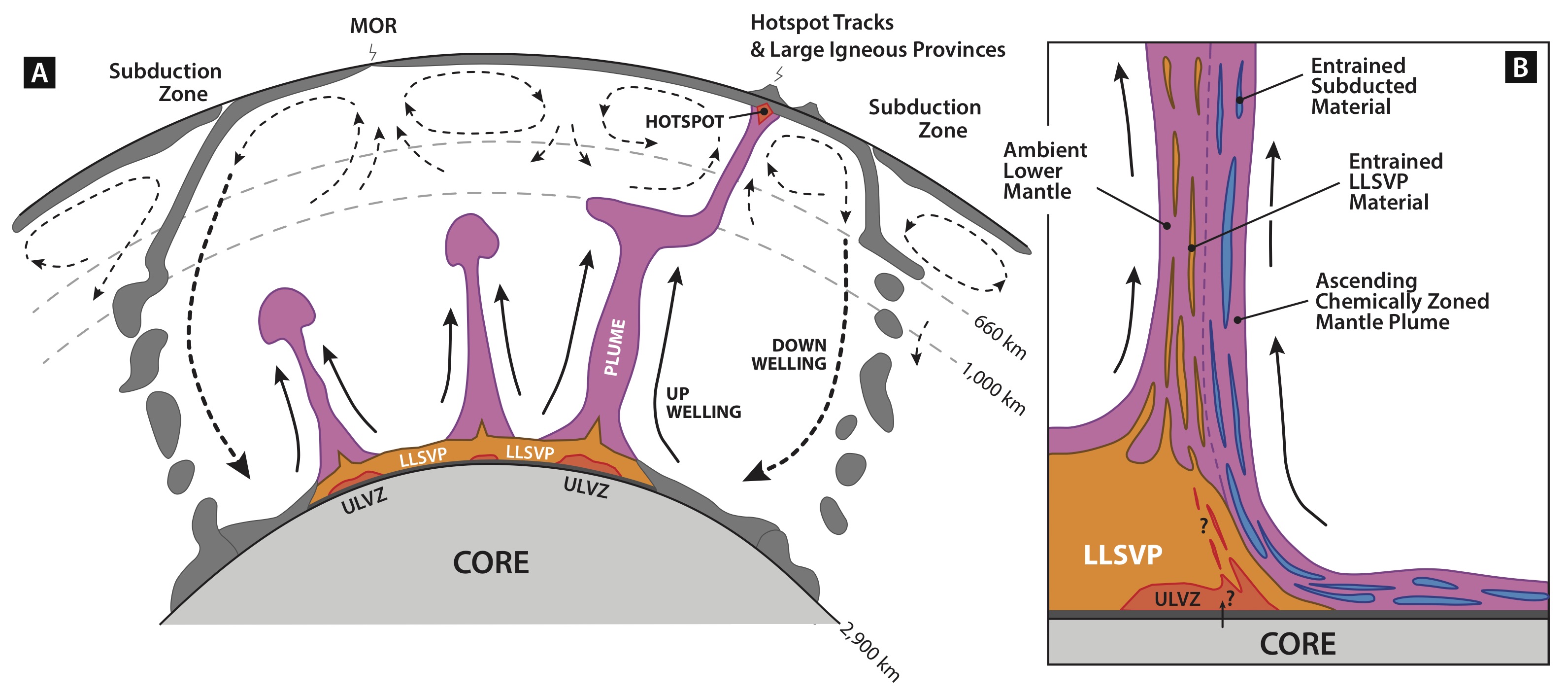The existence of mantle plumes was first proposed in the 1970s to explain intra-plate, hotspot volcanism, yet owing to difficulties in resolving mantle upwellings with geophysical images and discrepancies in interpretations of geochemical and geochronological data, the origin, dynamics and composition of plumes and their links to plate tectonics are still contested. In a recently published review in Nature Reviews, Earth and Environment, we discuss progress in seismic imaging, mantle flow modelling, plate tectonic reconstructions and geochemical analyses that have led to a more detailed understanding of mantle plumes. Observations suggest plumes could be both thermal and chemical in nature, can attain complex and broad shapes, and that more than 18 plumes might be rooted in regions of the lowermost mantle. The case for a deep mantle origin is strengthened by the geochemistry of hotspot volcanoes that provide evidence for entrainment of deeply recycled subducted components, primordial mantle domains and, potentially, materials from Earth’s core. Deep mantle plumes often appear deflected by large-scale mantle flow, resulting in hotspot motions required to resolve past tectonic plate motions. Future research requires improvements in resolution of seismic tomography to better visualize deep mantle plume structures at smaller than 100-km scales. Concerted multi-proxy geochemical and dating efforts are also needed to better resolve spatiotemporal and chemical evolutions of long-lived mantle plumes.

Koppers, A.A.P., Becker, T.W., Jackson, M.G., Konrad, K., Müller, R.D., Romanowicz, B., Steinberger, B. and Whittaker, J.M., 2021, Mantle plumes and their role in Earth processes. Nat Rev Earth Environ. https://doi.org/10.1038/s43017-021-00168-6
![]()
